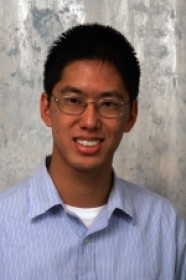
PhD Thesis Proposal
May

10:00 am to 12:00 am
Event Location: NSH 3305
Abstract: Object instance detection is a fundamental problem in Computer Vision and has been extensively studied in the past. From a single image, the goal is to detect a specific object from an arbitrary viewpoint in a cluttered environment. While the use of discriminative point-based features such as SIFT works well for recognizing texture-rich objects, these methods fail when presented with objects that have little to no texture.
Since weakly-textured objects are primarily defined by their contour structure, most approaches to detecting these objects focus primarily on matching their shape. The main issue is that even with perfect matches of contour information, weakly-textured objects still cannot be reliably recognized. This is because many of them have simplistic shape which can easily align to background clutter. The ambiguity in shape increases drastically in the presence of occlusions.
This thesis proposes to look at information beyond shape to perform reliable recognition of weakly-textured objects. We focus on two main aspects: (1) the object representation, and (2) reasoning about the plausibility of the occluded areas. We first describe a more complete representation of weakly-textured objects which incorporates both boundary and region information. Then, we discuss how this representation can be used for more coherent reasoning of occlusions. While many techniques in these areas have been proposed for generic object recognition, we focus on their application to instance recognition of weakly-textured objects. We present preliminary results on modeling the interior appearance of objects and occlusion reasoning with prior environment knowledge. We propose further work in modeling object appearance by analyzing other methods for representing weakly-textured regions and incorporating color information. Given a good representation of object appearance we propose to combine edge and region information for coherent reasoning of occlusions. In addition, low-level cues such as T-junctions are proposed to increase the robustness of occlusion reasoning and object detection.
Committee:
Martial Hebert, Chair
Alexei Efros
Takeo Kanade
Andrew Zisserman, University of Oxford